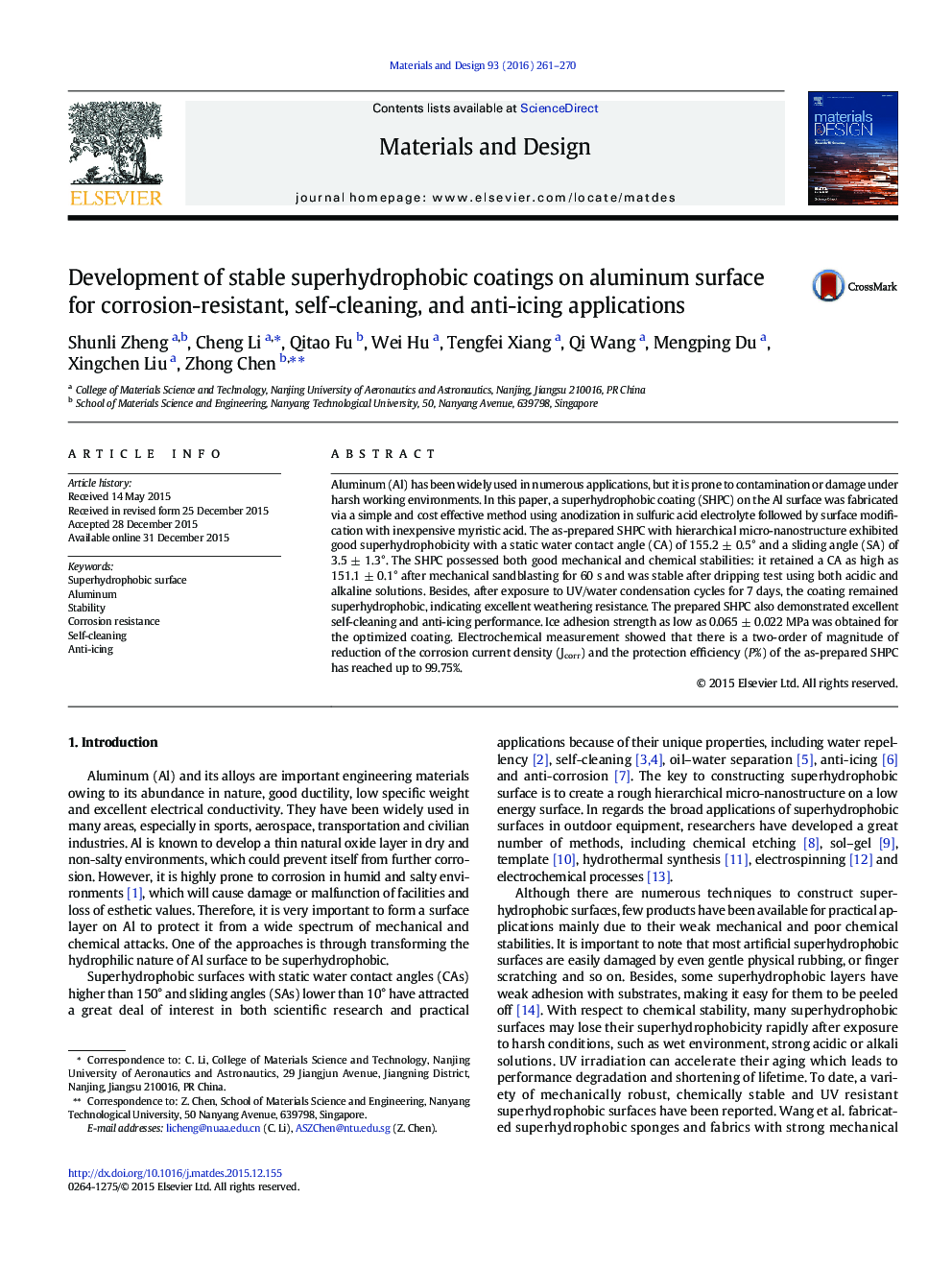| Article ID | Journal | Published Year | Pages | File Type |
|---|---|---|---|---|
| 828181 | Materials & Design | 2016 | 10 Pages |
•A hierarchical superhydrophobic coating (SHPC) was obtained by a cost effective method.•Synergistic effect of micro-nanostructure and low surface energy is the key to SHPC.•The SHPC retains a high contact angle above 150° after sandblasting for 60 s.•The SHPC shows excellent corrosion resistance with protection efficiency of 99.75%.•The SHPC has low ice adhesion strength around 0.065 MPa after 10 icing/de-icing cycles.
Aluminum (Al) has been widely used in numerous applications, but it is prone to contamination or damage under harsh working environments. In this paper, a superhydrophobic coating (SHPC) on the Al surface was fabricated via a simple and cost effective method using anodization in sulfuric acid electrolyte followed by surface modification with inexpensive myristic acid. The as-prepared SHPC with hierarchical micro-nanostructure exhibited good superhydrophobicity with a static water contact angle (CA) of 155.2 ± 0.5° and a sliding angle (SA) of 3.5 ± 1.3°. The SHPC possessed both good mechanical and chemical stabilities: it retained a CA as high as 151.1 ± 0.1° after mechanical sandblasting for 60 s and was stable after dripping test using both acidic and alkaline solutions. Besides, after exposure to UV/water condensation cycles for 7 days, the coating remained superhydrophobic, indicating excellent weathering resistance. The prepared SHPC also demonstrated excellent self-cleaning and anti-icing performance. Ice adhesion strength as low as 0.065 ± 0.022 MPa was obtained for the optimized coating. Electrochemical measurement showed that there is a two-order of magnitude of reduction of the corrosion current density (Jcorr) and the protection efficiency (P%) of the as-prepared SHPC has reached up to 99.75%.
Graphical abstractFigure optionsDownload full-size imageDownload as PowerPoint slide
